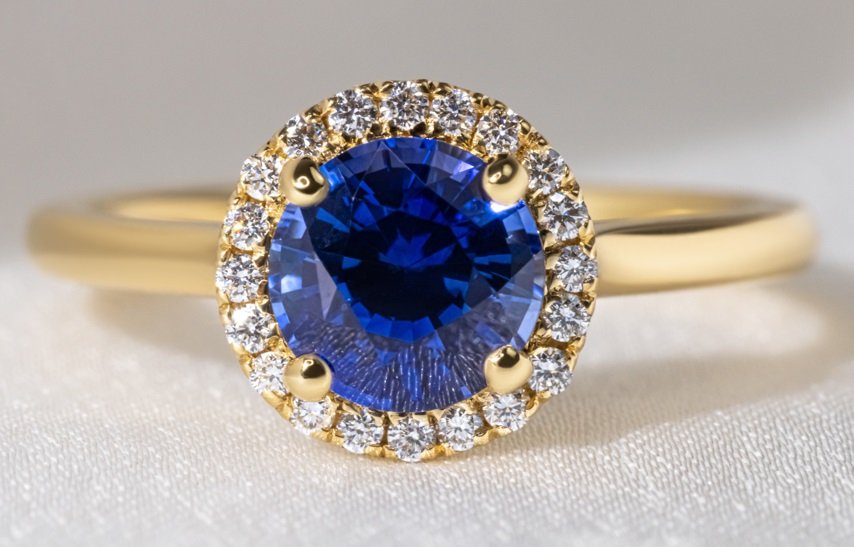
Introduction
In comes Lab grown blue diamonds, which have satiated the beauty and elegance of diamonds with the environmental aspect of the diamond. Their rich, brilliant hues and sustainability make these gems a rare fancy to jewelry lovers. Throughout this article, we’re going to explore what you need to know about lab grown blue diamonds including the advantages, their creation process and comparing them to natural blue diamonds.
Why Choose Lab Grown Blue Diamonds?
- Affordability: Lab grown blue diamonds are also attractive because they’re affordable. While these diamonds are much cheaper, and much cheaper than natural blue diamonds, at the same time, which means that even more people can enjoy this beauty without having to spend on their life savings.
- Ethical Sourcing: Traditional diamond mining has already drawn ethics questions into its practices of labor and to environmental damage. Unlike mined diamonds, lab grown diamonds, since they are not mined, present the more ethical choice to the aware buyer.
- Environmental Benefits: Lab grown diamonds utilize much less resources than mined diamonds. More sustainable than large scale diamond mining, the process reduces ecological footprint and reduces environmental impact.
- High Quality and Variety: Lab grown blue diamonds are grown in a laboratory, so oftentimes you can find them in more than just blues, with clearer grades than natural. This variety allows buyers to find a diamond that fits in your taste and style well.
How are Lab Grown Blue Diamonds Made?
To create lab grown blue diamonds, scientists use two main methods:
- High-Pressure High-Temperature (HPHT): It’s a hyper-pressure, hugely hot, deep in the earth simulation. The HPHT method is particularly good for blue diamonds because boron can be added to give the characteristic blue color.
- Chemical Vapor Deposition (CVD): Placing a diamond seed in a similar carbon rich gas mixture is CVD. Karstens said that over time the carbon atoms begin to deposit onto the seed creating a diamond. CVD diamonds can have the blue color induced by introducing boron to the process.
All methods produce a beautiful lab grown blue diamond, from pale to deep, vibrant colors.
Lab Grown vs Natural Blue Diamonds
There are some notable differences between lab grown and natural blue diamonds, despite their seeming similarities:
- Origin: Lab grown diamonds are produced in a controlled abode and are contended in the market just a few weeks, whereas natural blue diamonds are formed over millions of years deep inside the Earth.
- Price: The blue diamonds are so rare, that they are often much more expensive than lab grown options. High quality, stunning looking; lab grown diamonds are just a fraction of the price.
- Environmental Impact: In fact, lab grown diamonds harm the environment less than the mined diamonds it forcefully attacks. But if you’re eco conscious, opting for a lab grown stone could be a huge factor in your purchase.
Popular Use of Lab Grown Blue Diamonds
With that said, lab grown blue diamonds can be applied to many kinds of jewelry. Here are a few common ways that people like them:
- Engagement Rings: However, an engagement ring out of a lab grown blue diamond is a modern and trendy choice. The unique color gives it a signature style that creates the perfect sign of a signature story.
- Earrings and Necklaces: Blue diamonds are statement pieces. Earrings and necklaces look equally beautiful when they have these, as they’re a subtle yet striking way of making you differentiate from the crowd.
- Custom Jewelry: Because lab grown blue diamonds are so affordable, they can be integrated into custom jewelry design without going over budget. These diamonds are very versatile allowing you to be creative and not compromise.
Conclusion
Those looking to appropriate the blue diamond myth with their jewelry, should take note that lab grown blue diamonds are an ethical, affordable, and stunning alternative. From rings to necklaces to custom pieces, these gems are a great way to enjoy the brilliance and shine of diamonds, without the suffering of the environment and the ethical impact of traditional mining.



